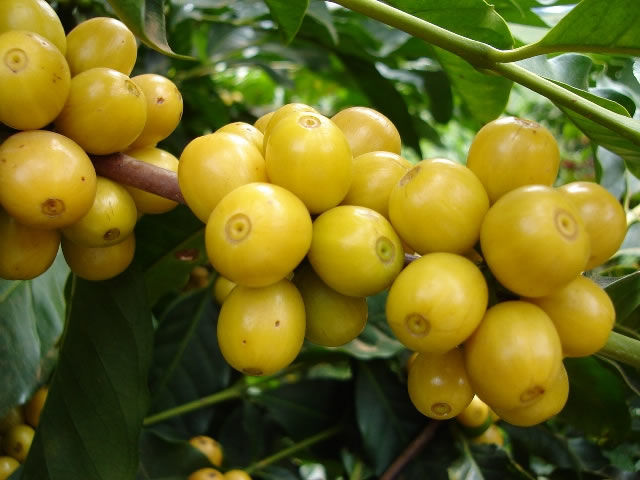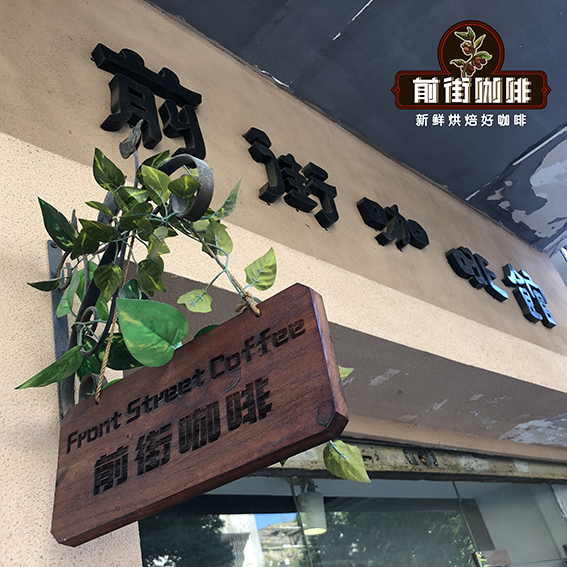Coffee beans that are not sour recommend how to make coffee that is not sour and how does coffee change if it is too sour?
Professional barista communication, please pay attention to coffee workshop (Weixin Official Accounts cafe_style)
Are you a caffeine addict? Like to enjoy the lively stimulation of caffeine, but feel unable to resist the acid value in coffee, well-known coffee evaluation platform Coffee Review for such coffee patients, made nearly 32 cups of coffee test, tell you how to find a cup without losing flavor, but will not let the acid in the body produce a hot reaction coffee.
low acid coffee
by Kenneth Davids; Reviews by Kenneth Davids and Justin Johnson
Indeed, the acid in coffee is a good thing. It gives the lifeless Arabica beans a pungent sour spark. Certain organic acids, rich in antioxidant properties, turn a health-threatening drink into a health-promoting one. However, some coffee lovers (coffee recluses) whose digestive system can't control its activity wrote to Coffee Review asking for help: How do I find a cup that gives me caffeine without reacting strongly to acid?
There are two guidelines that meet these two conflicting requirements. The first is to have coffee products that are clearly labeled as low acidity. There are already several coffee companies that specialize in low acidity coffee, and there is already a small but highly recognized market in the coffee industry today. This month, we tested twelve coffees that are labeled low acidity, from five companies that specialize in low acidity coffee. These companies use low technology methods to reduce acid. Both slow roasting and steam stripping of the silver coating prior to roasting reduce acidity by reducing the aroma emitted by the beans. In most cases, these companies also buy green beans from regions that produce naturally low-acidity coffee beans, such as Brazil.
Unexpected low-acid coffee
In addition to the above, coffee lovers with sensitive constitutions also have an option: natural (or accidental) low-acid coffee without deliberate reduction of acid, such as deep roast coffee, especially very deep roast coffee can dramatically reduce the acid in many coffees.
This may seem like another problem for coffee lovers who prefer light and medium roasts, but there is a way to look directly for low-altitude green beans with lower acid content. The lower the altitude, the lower the acid density of the beans, and supplement them with pulp removal methods that reduce acid content, such as solarization, semi-solarization and honey treatment.
Sumatra coffee would be a good second choice to Brazil's naturally low-acid coffee, however, although coffee sought at lower altitudes would be relatively less acidic, Brazilian and Sumatra coffees may produce slightly acidic coffee due to differences in growing and processing methods.
High quality low acid coffee
We also tested twenty coffees that weren't labeled as low acidity, and we used pH to judge the acidity of coffee with a lively, pungent taste. Three coffees met the low acid profile: Tully's French Roast (cup score: 85, low acid value when deep roasted, despite the low acid nature of the green beans themselves), Peak's Sumatra Blue Batak (cup score: 88, low acid value when deep roasted and less acidic than normal green beans), and the lovely, wild Brazil Esperanza from Water Avenue (cup score: 91).
A coffee cup advertised as low acid
What about the coffee cups we tested that were labeled low in acid? The good news is that after pH testing, they faithfully present low acid results.
The bad news was that most of the coffees performed poorly in taste, with an average cup score of 79. Twenty coffees that were not labeled low in acid scored an average cup score of 87.
The problem lies in the fact that coffee processing reduces coffee aroma (which is basically the most important factor in coffee flavor), plus most of the problem lies in a common, long-talked point, the earthy smell of raw beans. However, Simpatico Nice Coffee led the way in flavor among the twelve coffees, which were not only low in acid but also free of the earthy, moldy smell of green beans. Simpatico Espresso Roat scored 87 points and Black & Tan Blend scored 86 points.
Perhaps because the entrepreneurs who run those companies have little experience evaluating coffee, they are the target of green bean importers and smugglers to sell rotten beans. If so, this will be more serious than last year's shortage of high-quality Arabica beans.

Important Notice :
前街咖啡 FrontStreet Coffee has moved to new addredd:
FrontStreet Coffee Address: 315,Donghua East Road,GuangZhou
Tel:020 38364473
- Prev

How long is the growing period of coffee beans? why do you want to raise beans? baking coffee is the right way to raise beans.
Professional coffee knowledge exchange more coffee bean information please pay attention to the coffee workshop (Wechat official account cafe_style) coffee beans fresh is better? "raise beans" vs. "fresh-baked", which is better or worse? This article will introduce. Coffee beans also need to breathe how to raise beans correctly and wake up according to the degree of baking.
- Next

Home brewing coffee filter kettle Brita instructions Brita filter kettle assembly steps
For professional baristas, please pay attention to the coffee workshop (Wechat official account cafe_style) Brita manual 1. First of all, Brita is a portable water filter produced by a famous German water filtration company, which is sold in major shopping malls in China. The price of this section is about 400-500 yuan. two。 Wash your hands with soap and remove the filter element from the package; Note: the filter element is a little damp
Related
- Beginners will see the "Coffee pull flower" guide!
- What is the difference between ice blog purified milk and ordinary milk coffee?
- Why is the Philippines the largest producer of crops in Liberia?
- For coffee extraction, should the fine powder be retained?
- How does extracted espresso fill pressed powder? How much strength does it take to press the powder?
- How to make jasmine cold extract coffee? Is the jasmine + latte good?
- Will this little toy really make the coffee taste better? How does Lily Drip affect coffee extraction?
- Will the action of slapping the filter cup also affect coffee extraction?
- What's the difference between powder-to-water ratio and powder-to-liquid ratio?
- What is the Ethiopian local species? What does it have to do with Heirloom native species?

